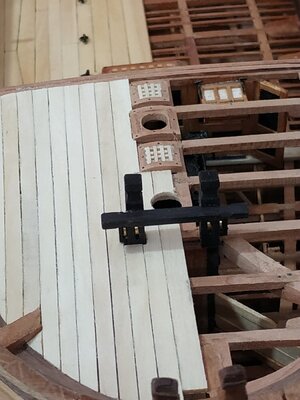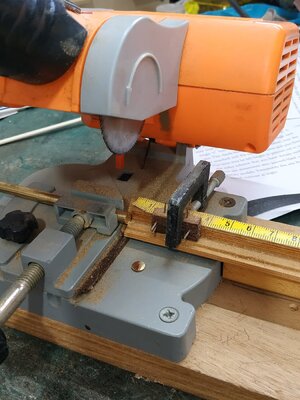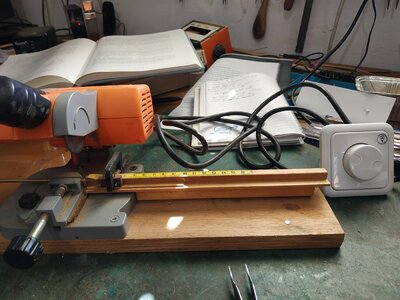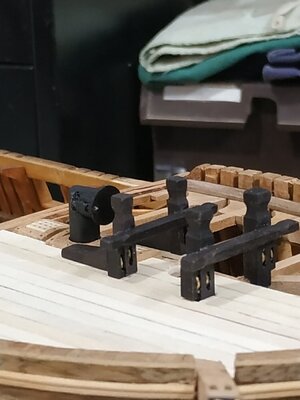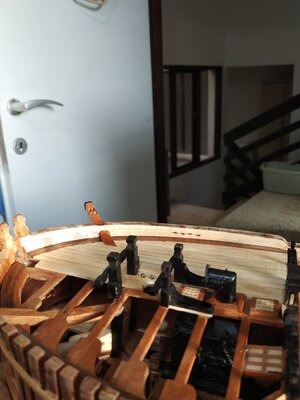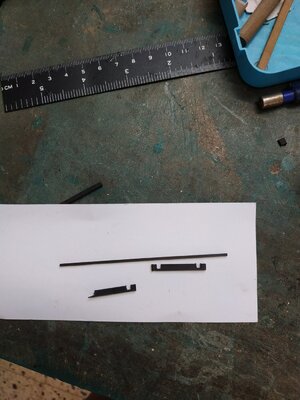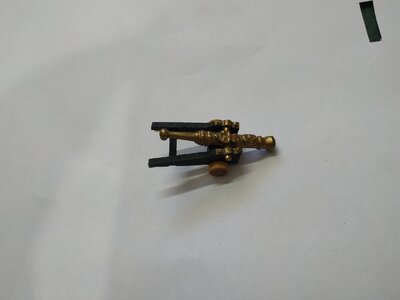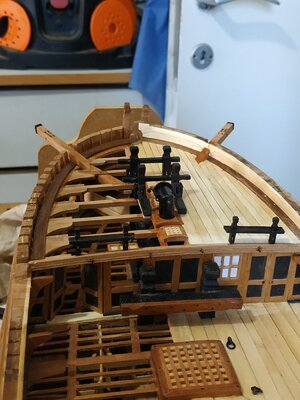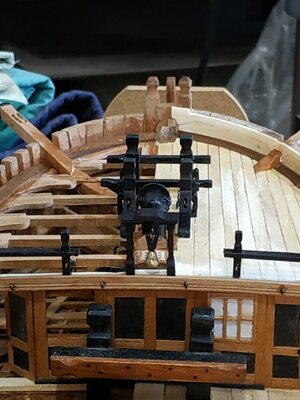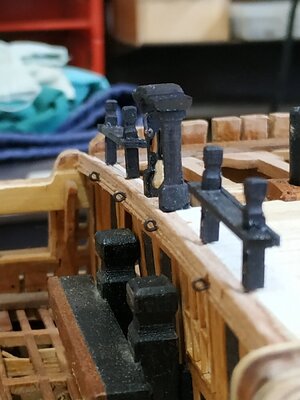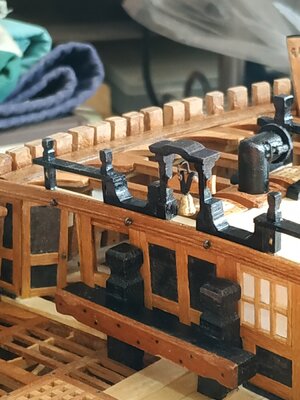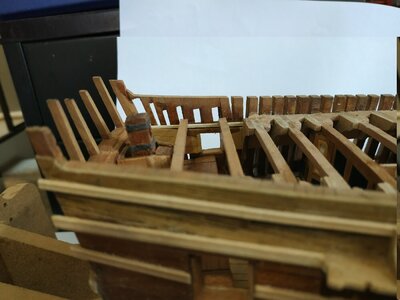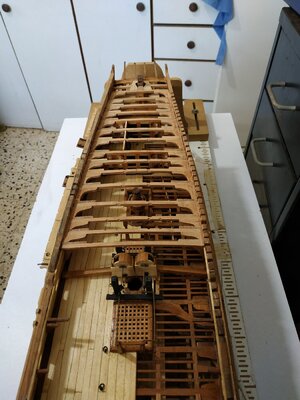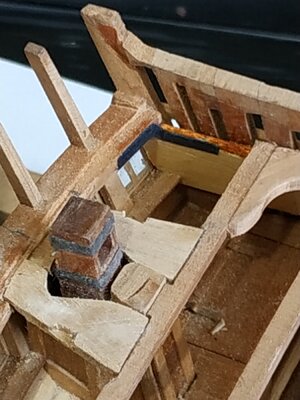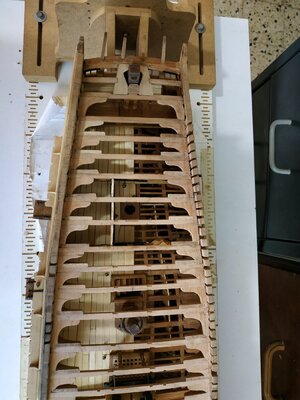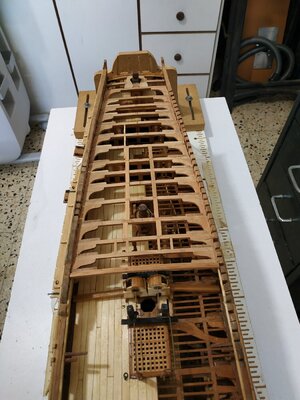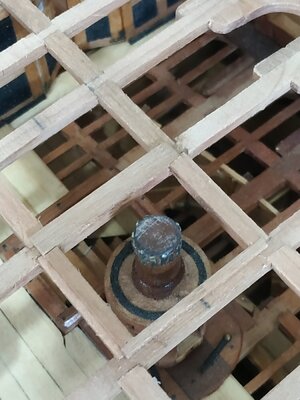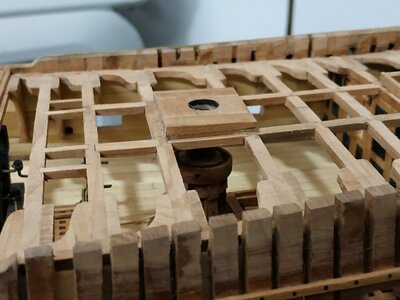The Cowel
Sits on the upper chimney of the Stove, and passes through the foredeck via a hole in a metal plate. The Cowel Base.
I used a wooden dowel, cut at an angle slightly more than 45deg, instead of fabricating from metal.
The opening faces forward, but the air intake is regulated by a Baffle. This is a thin disk, slightly larger than the aperture, which can be moved fore/aft. I made this also from a thin slice of dowel. The slides are made from cutdown dressmaker’s pins, the tube from insulation for thin electric wire, and the handle from copper wire. The ensemble painted black
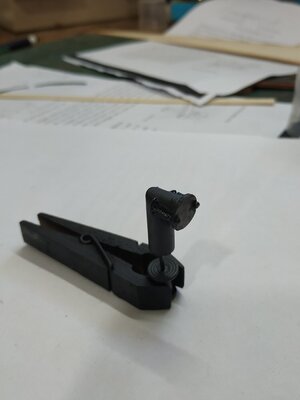
Sits on the upper chimney of the Stove, and passes through the foredeck via a hole in a metal plate. The Cowel Base.
I used a wooden dowel, cut at an angle slightly more than 45deg, instead of fabricating from metal.
The opening faces forward, but the air intake is regulated by a Baffle. This is a thin disk, slightly larger than the aperture, which can be moved fore/aft. I made this also from a thin slice of dowel. The slides are made from cutdown dressmaker’s pins, the tube from insulation for thin electric wire, and the handle from copper wire. The ensemble painted black





